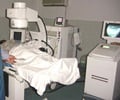A single estimated glomerular filtration rate (GFR) and albuminuria measurement may substantially overestimate prevalence of chronic kidney disease in the community.
Diagnosis of Chronic kidney disease based on single laboratory measurements may lead to overestimation of the disease prevalence, suggests studies. It is important to confirm abnormal eGFR and proteinuria on at least one further sample 3 months apart before categorising the individual as having CKD so as to prevent over estimation.Chronic kidney disease (CKD) occurs when there is progressive loss in renal function over a period of months or years. There occurs an accumulation of water, waste and toxic substances in the body. These are normally excreted by the kidneys. CKD is a global threat to health especially for the developing countries. Therapy is expensive and lifelong. Incidence of CKD has doubled in the last 15 year. Over 1 million people worldwide are alive on dialysis or with a functioning graft.
Estimated glomerular filtration rate (eGFR) and albuminuria are two indicators used in the diagnosis of CKD. eGFR assesses the kidney function. It measures the volume of fluid filtered by the kidney per unit time. A diminishing eGFR means a failing kidney. Albuminuria is a pathological condition wherein albumin is present in the urine. Albumin is a protein in human blood. Ideally it should not be present in the urine.
Repeatedly diminished estimated glomerular filtration rate (eGFR) and/or albuminuria are required to diagnose chronic kidney disease (CKD). Most estimates of CKD prevalence have used single measurements. A study was conducted to know if a single estimated glomerular filtration rate and albuminuria measurement may substantially overestimate prevalence of chronic kidney disease.
The reproducibility of eGFR and albuminuria was assessed. It was found that the proteinuria recorded during an initial workup was reproducible in only 48% at 3 months. No significant change in eGFR was noted in the study population when tests where recorded after 3 months. But 21% individually changed CKD stage (Chronic kidney disease is divided into five stages of increasing severity).
It was found that on repeated testing the point prevalence of the disease was halved. An initial abnormal eGFR or albuminuria is thus associated with a lesser predictive value than previously thought.
The results of the study suggested that a diagnosis of CKD in a patient should not be made based on a single estimated glomerular filtration rate and albuminuria measurement. It would be better to repeat the tests after 3 months following the initial work up before confirming a diagnosis. By doing this an overestimation of disease prevalence can be avoided.
References:
1. Nephron Clin Pract 2010 Oct 15; 117(4):c365-c369
2. AgarwalSK, Dash SC, Irshad M et al. Prevalence of Chronic Renal Failure in adults in Delhi, India. Nephrol Dial Transplant 2005; 20: 1638–1642
Source-Medindia













